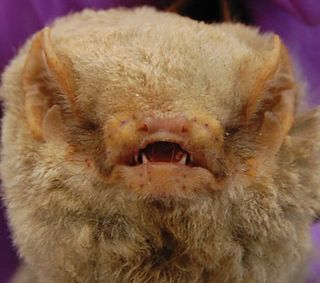
The Gruiformes are an order containing a considerable number of living and extinct bird families, with a widespread geographical diversity. Gruiform means "crane-like".

Phelsuma is a large genus of geckos in the family Gekkonidae. Species in the genus Phelsuma are commonly referred to as day geckos.

Oedura is a genus of medium to large geckos, lizards in the family Diplodactylidae. The genus is endemic to Australia. Species in the genus are referred to by the common name velvet geckos.

Lophognathus is a genus of large-bodied agamid lizards, consisting of two species — L. gilberti and L. horneri — both of which are endemic to northern Australia. Along with several other closely related genera, these lizards are commonly referred to as "dragons". In Australia, these lizards are also colloquially known as "Ta Ta" lizards, due to their habit of "waving" after running across hot surfaces.

The Homalopsidae are a family of snakes which contains about 30 genera and more than 50 species. They are commonly known as Indo-Australian water snakes, mudsnakes, or bockadams. They are also known as ular air in Indonesian. They are typically stout-bodied water snakes, and all are mildly venomous. Two monotypic genera are notable for their unusual morphology: Erpeton possesses a pair of short, fleshy appendages protruding from the front of the snout, and Bitia has uniquely enlarged palatine teeth. Cerberus species have been noted to use sidewinding to cross slick mud flats during low tide. Fordonia and Gerarda are the only snakes known to tear their prey apart before eating it, pulling soft-shelled crabs through their coils to rip them apart prior to ingestion.

Strombus is a genus of medium to large sea snails, marine gastropod molluscs in the family Strombidae, which comprises the true conchs and their immediate relatives. The genus Strombus was named by Swedish Naturalist Carl Linnaeus in 1758. Around 50 living species were recognized, which vary in size from fairly small to very large. Six species live in the greater Caribbean region, including the queen conch, Strombus gigas, and the West Indian fighting conch, Strombus pugilis. However, since 2006, many species have been assigned to discrete genera. These new genera are, however, not yet found in most textbooks and collector's guides.

The Polyceridae are a taxonomic family of sea slugs, dorid nudibranchs, marine gastropod mollusks within the superfamily Polyceroidea.

Lithophaga, the date mussels, are a genus of medium-sized marine bivalve molluscs in the family Mytilidae. Some of the earliest fossil Lithophaga shells have been found in Mesozoic rocks from the Alps and from Vancouver Island.

Neritidae, common name the nerites, is a taxonomic family of small to medium-sized saltwater and freshwater snails which have a gill and a distinctive operculum. The family Neritidae includes marine genera such as Nerita, marine and freshwater genera such as Neritina, and freshwater and brackish water genera such as Theodoxus.

The golden-throated barbet is an Asian barbet native to Southeast Asia, where it inhabits foremost forests between 900 and 2,700 m altitude. It is listed as Least Concern on the IUCN Red List because of its wide distribution and stable population.

The Abo bat is a species of vesper bat in the family Vespertilionidae. It is found in several countries in West Africa and Central Africa. It is found in subtropical and tropical dry and moist lowland forests.

Nesokia is a genus of rodent in the family Muridae endemic to West Asia and Central Asia known as the short-tailed bandicoot rats.
Stenocephalemys is a genus of rodent in the family Muridae. The genus is endemic to Ethiopia.

Aprosmictus is a genus of parrots in the family Psittaculidae native to Oceania. Several former members, including the Australian king parrot, are now placed in the genus Alisterus.

Amathinidae, is a taxonomic family mostly consisting of small and minute sea snails, marine heterobranch gastropod molluscs or micromolluscs in the superfamily Pyramidelloidea.

Liotiidae is a family of small sea snails, marine gastropod mollusks in the clade Vetigastropoda.
Fusus is a genus of small to large sea snails, marine gastropod molluscs in the family Fasciolariidae, the spindle snails and tulip snails.

Demansia is a genus of venomous snakes of the family Elapidae. Members of the genus are commonly known as whip snakes or whipsnakes, as are members of several other genera.

Isocrinida is an order of sea lilies which contains four extant families.
Burton's yellow-shouldered bat is a species of leaf-nosed bat found in Panama and Costa Rica.
















